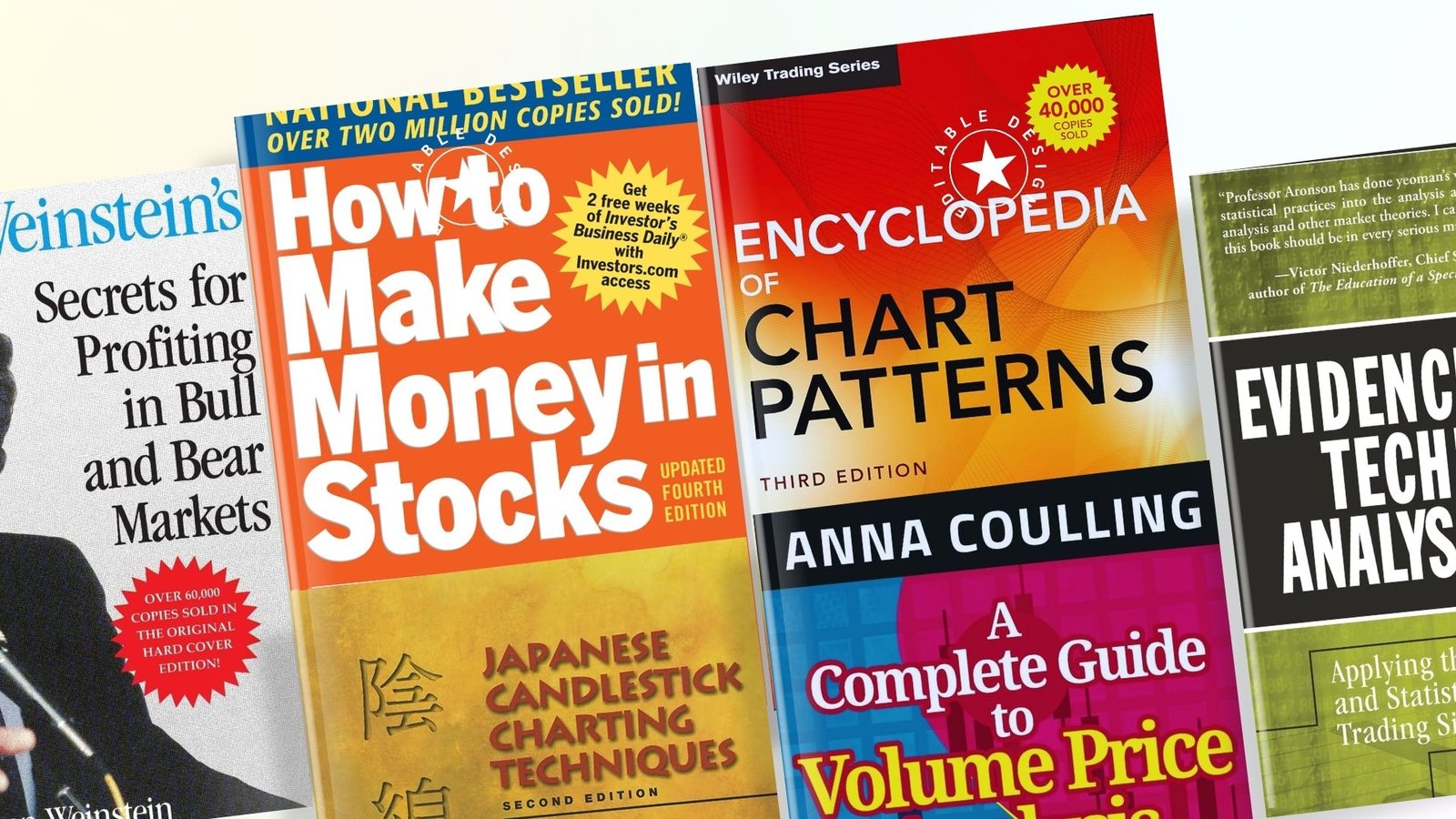Did you know that over 90% of traders fail to make consistent profits? But here’s the surprising part: it’s not luck that separates the successful traders; it’s knowledge. Finding the best technical analysis book could be the key to mastering the skills you need.
However, not all books on the topic are created equal. Some will help you sharpen your skills, while others won’t make a dent. If you’re serious about improving your trading, knowing which books actually make a difference could be the game-changer you need. Here’s a look at the best technical analysis books that can help you level up.
Best Technical Analysis Books for Beginners
Starting as a beginner in trading can feel overwhelming with all the charts, indicators, and conflicting advice. The right book can cut through the noise and give you a solid foundation. This list covers the best beginner-friendly books that make technical analysis easy to understand.
1. Technical Analysis of the Financial Markets
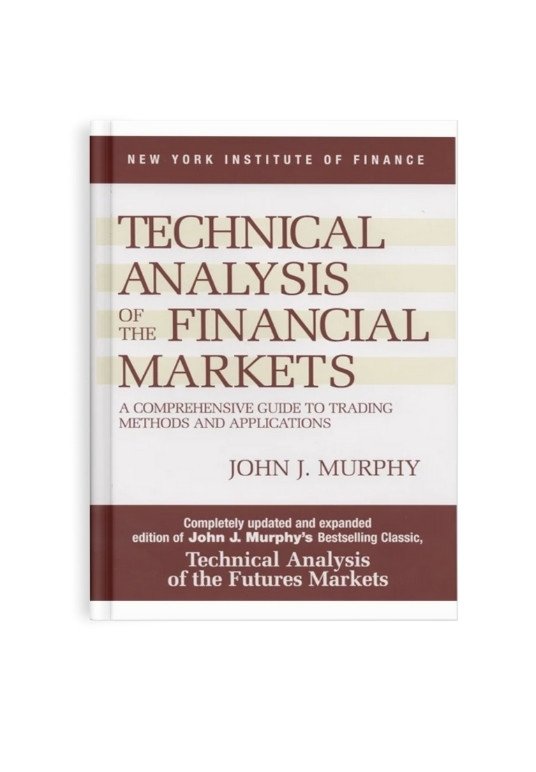
Author: John J. Murphy ┃ Pages: 576 ┃ Where to Buy: Amazon
The first book on our list is Technical Analysis of the Financial Markets by John Murphy. This comprehensive guide is a must-read for traders, covering everything from basic charting to advanced indicators.
Murphy blends technical and fundamental analysis, explaining how market factors influence price movements. He dives into chart patterns, trends, and tools like moving averages, oscillators, and momentum indicators.
This book has earned its reputation as the “Bible” of technical analysis, and for good reason. This book is thick and may feel overwhelming, but John Murphy’s Technical Analysis of the Financial Markets is a must-read if you are someone like me. It is one of the best technical analysis books out there for beginners.
Core Concepts Covered
- Chart patterns and trend analysis
- Moving averages, oscillators, Volume and Open Interest
- Dow Theory and market cycles
- Intermarket relationships (stocks, bonds, commodities, forex)
- Risk management and Intermarket analysis
2. Japanese Candlestick Charting Techniques
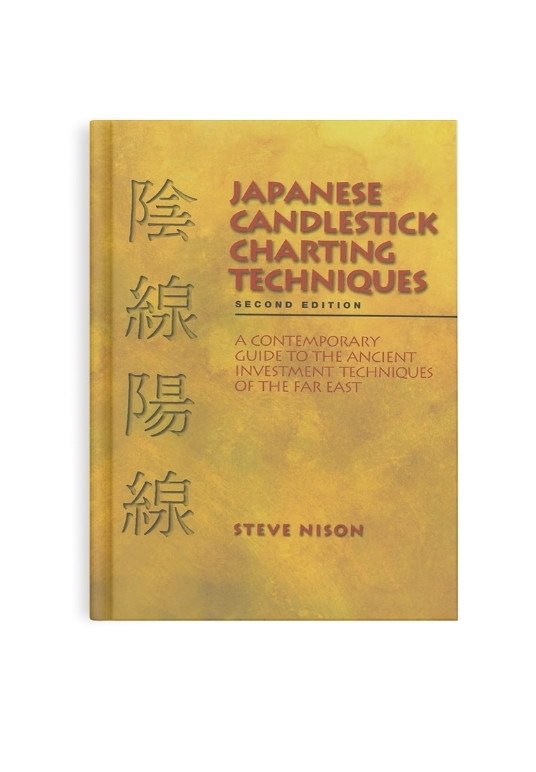
Author: Steve Nison ┃ Pages: 270 ┃ Where to Buy: Amazon
You need to read this book. Most traders see candlestick patterns as simple signals, but Steve Nison reveals the deeper battle between buyers and sellers.
Japanese Candlestick Charting Techniques goes beyond patterns. It explains their psychology and how to use them with other strategies for better timing. These techniques work in any market, whether stocks, forex, or futures.
The real value is that it helps you stop looking at charts like a robot. Instead, you’ll understand the emotions behind the candles—panic, greed, hesitation.
If you’re still using candlesticks without understanding them, you’re gambling. Read this book, and you won’t be.
Core Concepts Covered
- Origins and fundamentals of candlestick charting
- How to construct and interpret key candlestick patterns
- Psychology behind bullish and bearish candle formations
- Combining candlestick signals with Western technical analysis
- High-probability reversal and continuation patterns
- Using candlestick patterns to confirm trend strength and market sentiment
3. How to Make Money in Stocks

Author: William J. O’Neil ┃ Pages: 464 ┃ Where to Buy: Amazon
Written by William J. O’Neil, a successful trader and founder of Investor’s Business Daily, this book offers a rare blend of historical analysis and actionable strategy. Instead of relying on speculation, it presents CAN SLIM, a system built from decades of data on stocks that delivered exceptional gains.
The book’s greatest strength lies in its use of real charts, showing how top stocks behaved before their biggest moves. It challenges conventional wisdom by proving that strength leads to more strength rather than focusing on undervalued stocks.
While the writing is dense and frequently promotes Investor’s Business Daily, the insights are clear.
Core Concepts Covered
- Identifying winning stocks by studying past market leaders
- Using the C-A-N S-L-I-M method to find stocks with strong earnings, leadership, and institutional support
- Understanding market direction and aligning trades with major trends
- Timing entries based on technical breakouts and volume patterns
- Avoiding common mistakes that lead to losses
4. Come Into My Trading Room: A Complete Guide to Trading
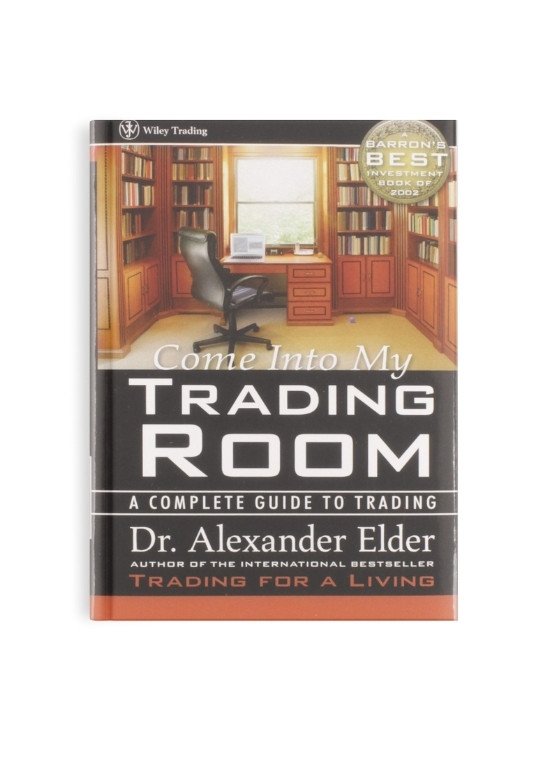
Author: Dr. Alexander Elder ┃ Pages: 320┃ Where to Buy: Amazon
Written by Dr. Alexander Elder, a professional trader and psychiatrist, this book goes beyond strategy to focus on psychology, risk management, and discipline. It proves that mindset is as crucial as technical skills.
The book starts with the basics, introducing core market concepts for beginners. It then moves into the key elements of successful trading, covering psychology, methods, and money management. Finally, it shifts to the professional side, explaining how to structure trading activities with discipline and consistency.
With a blend of technical and psychological insights, the book provides a strong foundation for all traders. Some sections feel repetitive, but those who apply its lessons will develop a more disciplined approach.
Core Concepts Covered
- Trading vs. investing vs. gambling – building a structured approach
- Choosing the right markets – stocks, futures, and options
- Trading discipline and psychology for long-term success
- Technical indicators – moving averages, MACD, Force Index
- Money management – 2% and 6% risk limits
- Performance tracking – spreadsheets and trading journals
- Professional trading structure for consistency and discipline
- Realistic profit targets and balancing personal finances
- Real-world examples and the Triple Screen system
5. Trading in the Zone
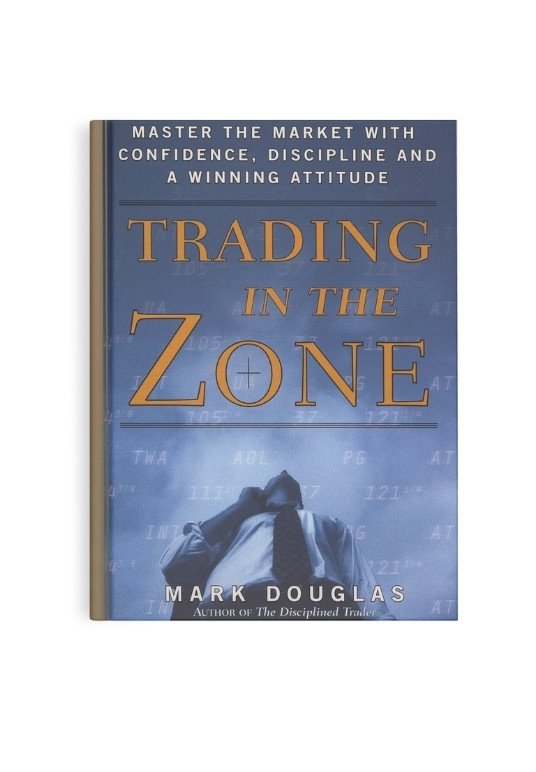
Author: Mark Douglas ┃ Pages: 196 ┃ Where to Buy: Amazon
This is not a technical analysis book but it’sa mandatory reading for serious traders. Mark Douglas drills deep into the real reason most traders fail—their mindset. Trading in the Zone is about mastering the mental side of trading, the part that ruins even the best strategies if ignored.
Douglas explains why traders sabotage themselves, why randomness is misunderstood, and why discipline matters more than any indicator. He doesn’t just tell you to control emotions but shows how to think in probabilities and develop true consistency.
What makes it different is its brutal honesty. It strips away the illusion of certainty and forces traders to accept risk without hesitation. This book will either change how you trade or expose why you can’t.
Core Concepts Covered
- How beliefs and emotions shape trading decisions
- The importance of thinking in probabilities instead of predictions
- Why traders repeat mistakes and how to break the cycle
- How to accept risk and develop real confidence in execution
- The mental framework needed to achieve consistency
- Shifting from an outcome-focused mindset to a process-driven approach
Related: Powerful Lessons from the Book Trading in the Zone
6. Stan Weinstein’s Secrets For Profiting in Bull and Bear Markets
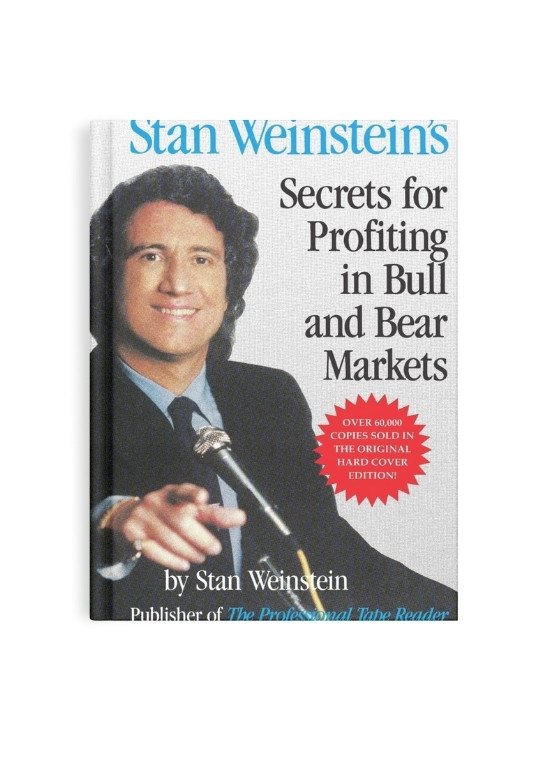
Author: Stan Weinstein ┃ Pages: 368 ┃ Where to Buy: Amazon
Weinstein’s method revolves around four market stages: accumulation, uptrend, distribution, and decline. This helps traders time entries and exits with precision. His strategies focus on moving averages, volume, support, and resistance to identify trends early.
The book also covers risk management, stop-loss placement, and position sizing, providing clear rules on when to buy, sell, and protect capital. While some concepts may feel basic for advanced traders, the structured approach is an excellent guide for mastering trend-based trading.
Core Concepts Covered
- Identifying market stages to time trades effectively
- 30-week moving average for trend analysis
- Breakout and breakdown points for entry and exit
- Volume’s role in confirming price movements
- Buying at the right time and avoiding chasing stocks
- Selling strategies – when to take profits and cut losses
- Short selling – spotting opportunities in declining stocks
- Relative strength for finding outperforming stocks
- Long-term market indicators for bull and bear trends
7. Encyclopedia of Chart Patterns
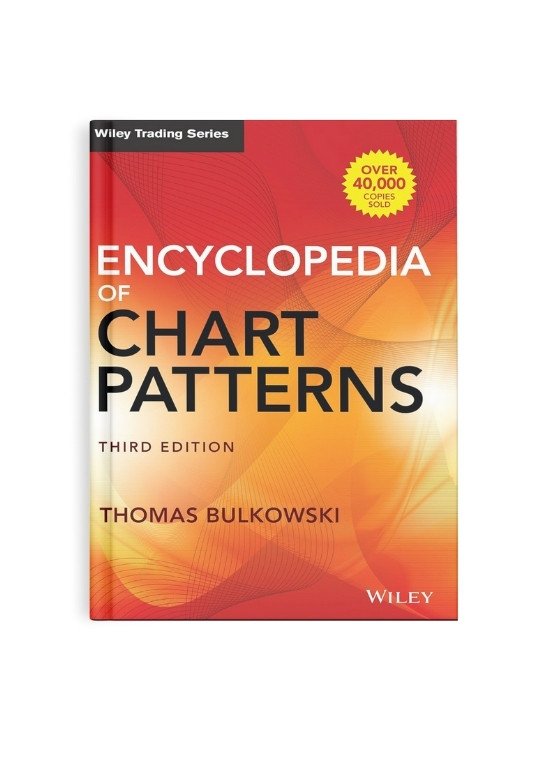
Author: Thomas N. Bulkowski ┃ Pages: 1312 ┃ Where to Buy: Amazon
Most books treat chart patterns as shortcuts to easy profits, but Thomas Bulkowski makes it clear in Encyclopedia of Chart Patterns that markets don’t work like that.
This book doesn’t just show patterns, it tests them. Using real data, Bulkowski breaks down the success and failure rates of chart formations and explains when they work and when they don’t. If a pattern only works 50% of the time, are you really trading or just flipping a coin?
If you’re tired of guessing, this book will change how you trade patterns and is often considered one of the best technical analysis books for understanding chart patterns with real, actionable insights.
Core Concepts Covered
- Statistical performance of chart patterns based on historical data
- Success and failure rates of patterns like Head and Shoulders, Triangles, and Flags
- Factors affecting pattern reliability
- Impact of volume, breakouts, and false signals on pattern effectiveness
- Common pitfalls when using chart patterns
- Real-world application of chart patterns
Best Technical Analysis Books for Advanced Traders
Welcome to the advanced section of technical analysis. Now, these books will give your skills depth. They focus on statistical validation, market psychology, and refining complex strategies.
Instead of repeating common patterns and indicators, they provide a structured approach to analyzing market behaviour, testing strategies, and managing risk more accurately.
1. Beyond Candlesticks

Author: Steve Nison ┃ Pages: 304 ┃ Where to Buy: Amazon
Steve Nison builds on his earlier work by diving deeper into Japanese candlestick analysis. The book explores advanced patterns, lesser-known formations, and how candlesticks can be combined with Western technical tools for stronger signals.
It introduces techniques like three-line break charts, Renko charts, and kagi charts, expanding beyond traditional candlestick patterns. Nison also explains how these methods reveal market psychology and provide a clearer picture of trend strength and reversals.
While detailed, the book rewards traders who want to refine their chart-reading skills. Those familiar with basic candlestick patterns will gain a broader perspective on market movements and how to integrate these tools into a complete trading strategy.
Core Concepts Covered
- Interpreting candlestick patterns beyond basic formations
- Significance of real bodies and shadows in market sentiment
- Integrating candlestick analysis with Western technical tools
- Three-line break charts for spotting trend shifts
- Renko and Kagi charts for filtering market noise
2. Volume Price Analysis
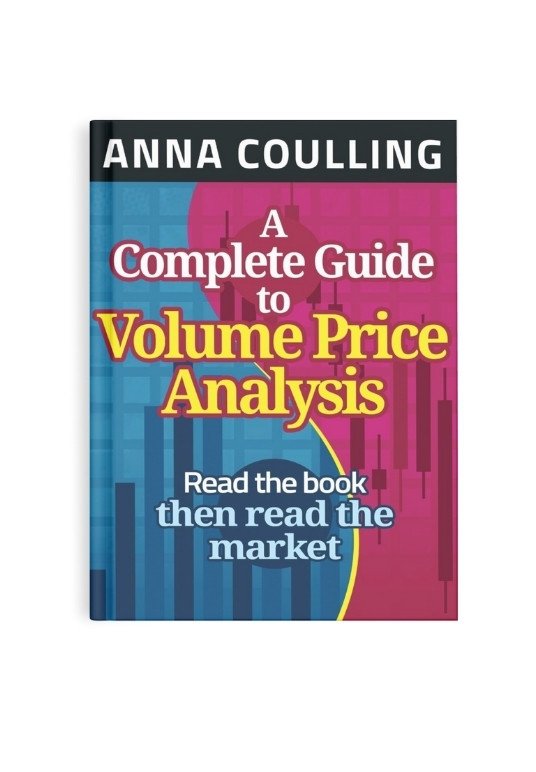
Author: Anna Coulling ┃ Pages: 194 ┃ Where to Buy: Amazon
Anna Coulling explains how volume confirms trends, signals reversals, and exposes market manipulation. Volume Price Analysis covers accumulation, distribution, and effort vs. result, helping traders spot institutional activity.
The book focuses on reading raw price and volume data instead of relying on lagging indicators. While it avoids complex formulas, applying these concepts takes practice. A solid resource for traders who want to use volume as a key decision-making tool.
Core Concepts Covered
- Volume as a tool for trend validation and reversal signals
- Identifying accumulation and distribution phases in price action
- Effort vs. result concept for assessing market strength
- Spotting institutional activity through volume patterns
- Price-volume relationships without relying on indicators
- Using volume to confirm breakouts and avoid false moves
3. Evidence-Based Technical Analysis
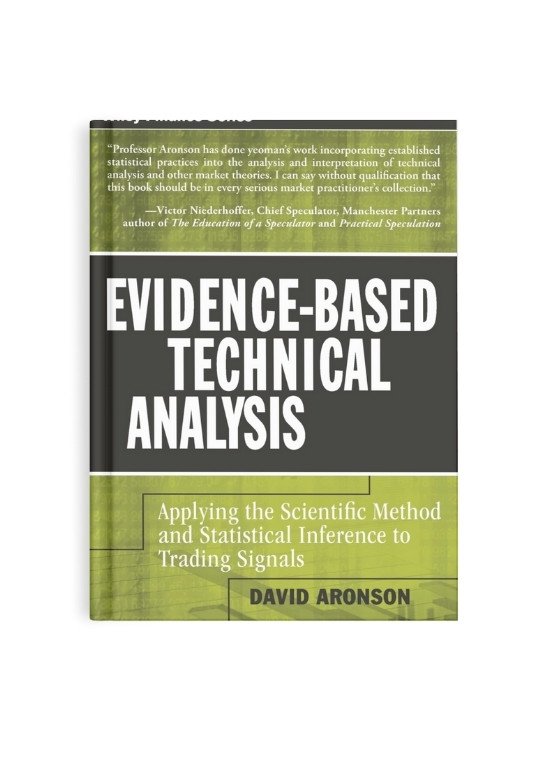
Author: David Aronson ┃ Pages: 544 ┃ Where to Buy: Amazon
David Aronson challenges traditional technical analysis by using statistical testing to separate effective strategies from unreliable ones. Instead of relying on intuition, the book emphasizes data-driven decision-making and the dangers of subjective bias.
Evidence-Based Technical Analysis introduces methods like hypothesis testing and data mining to evaluate trading signals objectively. Aronson explains how randomness can mislead traders and why many common indicators lack statistical backing. The focus is on using empirical research to refine strategies.
This book is perfect for traders looking for a more analytical approach to technical analysis. While complex, those who engage with it will learn how to validate trading systems scientifically.
Core Concepts Covered
- Structured methods to improve technical analysis reliability
- Psychology’s influence on market behavior and trading
- Core principles that shape technical analysis
- Using statistics to test and validate trading strategies
- Impact of liquidity on counter-trend trading
- Trend-following in futures vs. counter-trend strategies in stocks
Final Thoughts
Technical analysis is valuable for improving trading performance when you have the right resources. The books listed here, whether you’re just starting or already an experienced trader, provide useful insights into market behavior, chart patterns, risk management, and trading psychology.
It’s not enough to just read these books. You need to apply what you learn. Begin with the basics, build a solid foundation, and gradually move toward more advanced strategies. Consistency and discipline will help you improve over time.
Next Steps:
- Beginners: Start with Technical Analysis of the Financial Markets by John Murphy and Japanese Candlestick Charting Techniques by Steve Nison.
- Advanced Traders: Check out Volume Price Analysis and Evidence-Based Technical Analysis by David Aronson to refine your strategies.
Take what you learn, track your progress, and continue to refine your approach. With the right resources, you’ll be on your way to becoming a more effective trader.
Frequently Asked Questions (FAQs)
1. What is the best technical analysis book for beginners?
The best technical analysis book for beginners is “Technical Analysis of the Financial Markets” by John J. Murphy. It’s often referred to as the “Bible of Technical Analysis” because it covers everything from chart patterns to market cycles in an easy-to-understand way.
2. What Is the Best Book on Candlestick Patterns?
The best book for understanding candlestick patterns is “Japanese Candlestick Charting Techniques” and “Beyond Candlesticks” by Steve Nison. It not only explains how to read candlestick patterns but also delves into the psychology behind them.
3. Is there a book that focuses on trading psychology?
Yes, “Trading in the Zone” by Mark Douglas is a must-read for understanding trading psychology.
4. What book should I read if I want to learn about volume analysis?
For volume analysis, “Volume Price Analysis” by Anna Coulling is highly recommended. It explains how to use volume to confirm trends, spot reversals, and identify institutional activity in the markets.
5. How Long Does It Take to Learn Technical Analysis?
Learning the basics of technical analysis, such as understanding chart patterns, support and resistance levels, and basic indicators like moving averages, can take 2 to 3 months if you dedicate a few hours each week to studying and practicing.

